Title
OLAFUR ELIASSON: BAROQUE BAROQUEPosted In
Installation, Sculpture, ExhibitionArtist
Olafur EliassonDuration
21 November 2015 to 06 March 2016Venue
The Winter Palace of Prince Eugene of SavoyOpening Hours
10.00 - 18.00 dailyLocation
Telephone
+43 1 795 57 134| Detailed Information | |||||
|---|---|---|---|---|---|
| Title | OLAFUR ELIASSON: BAROQUE BAROQUE | Posted In | Installation, Sculpture, Exhibition | Artist | Olafur Eliasson |
| Duration | 21 November 2015 to 06 March 2016 | Venue | The Winter Palace of Prince Eugene of Savoy | Opening Hours | 10.00 - 18.00 daily |
| Location |
Himmelpfortgasse 8 1010 Vienna
Austria | Telephone | +43 1 795 57 134 | [email protected] | |
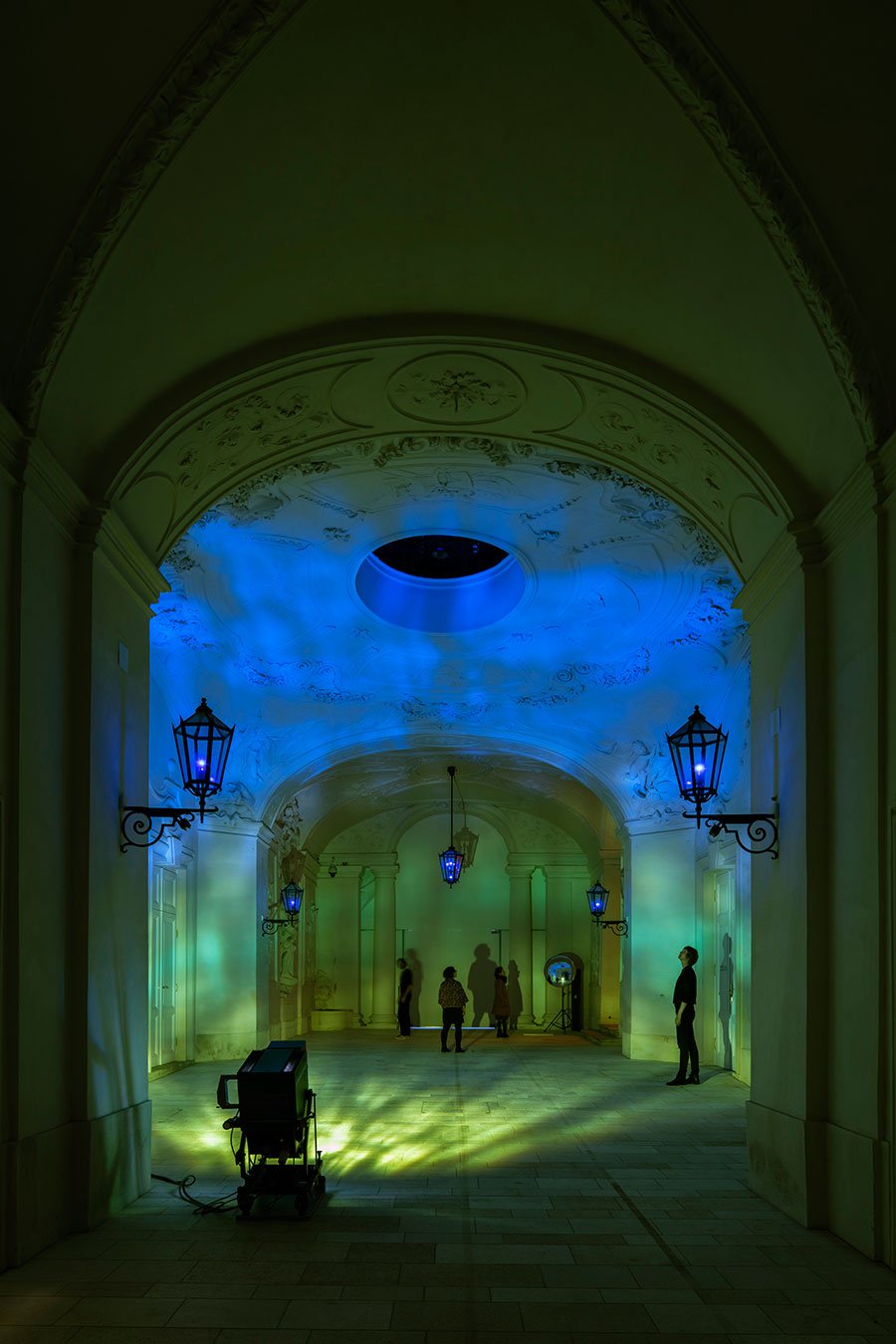
Olafur Eliasson
Die organische und kristalline Beschreibung, 1996
Projector, wave machine, colour filter foil, convex mirror
The Winter Palace of Prince Eugene of Savoy, Vienna 2015
Photo by Anders Sune Berg
Courtesy of Thyssen-Bornemisza Art Contemporary Collection, Vienna
© Olafur Eliasson.
Although at first glance Eliasson’s work and the Baroque may seem, both aesthetically and technically, worlds apart, conceptually there is common ground which makes the cohabitation of the two all the more interesting beyond the thrill of mere juxtaposition. The Baroque, coaxed by both the Catholic Church and the aristocracy, evolved out a desire to impress by evoking emotional states and as such it appeals exclusively to the senses; to achieve this it uses dramatic effects like exuberance, grandeur, movement and tension in order to create an enhanced reality through overstimulation. Although Eliasson’s point of departure and modus operandi may be vastly different, his work also aims at stretching reality by manipulating the viewer’s perception.
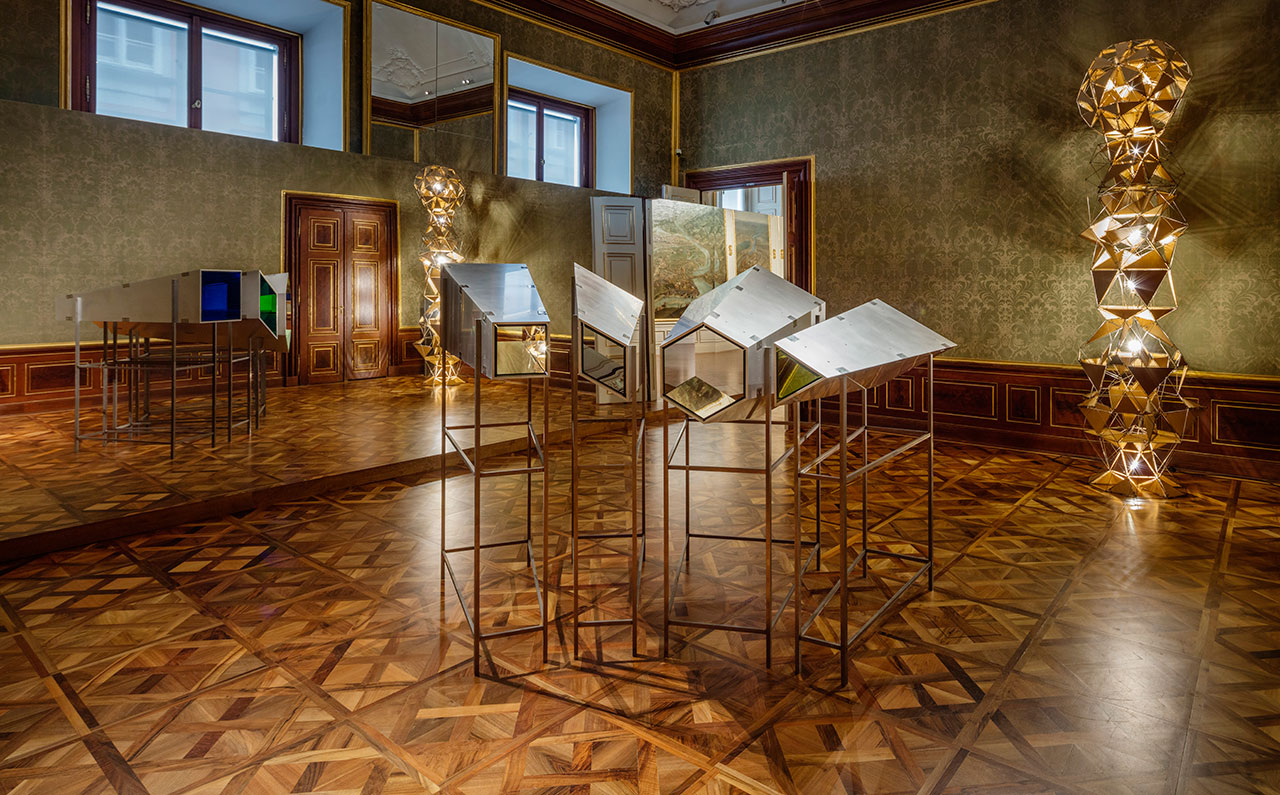
Installation view, 2015
The Winter Palace of Prince Eugene of Savoy, Vienna 2015
Photo by Anders Sune Berg
© Olafur Eliasson.
In “Die organische und kristalline Beschreibung” (“The Organic and Crystalline Description”, 1996), a projector coupled with a wave-effect machine washes through a convex mirror in the entrance vestibule of the Palace with simmering blues and yellows. The resulting motion of coloured light dematerialises the space transforming it into an underwater dreamscape. Colour is also a key element in “Five orientation lights” (1999), whereby the Marble Hall of the Upper Belvedere is divided into five sections through being illuminated in different colours, and in “Yellow Corridor” (1997), where the Palace’s grand staircase is monochromatically saturated with yellow light. Deprived from experiencing any other hues, the visitor develops hyper detailed vision, giving the statues, reliefs and other flourishes he/she encounters an added vibrancy. Exiting the space, as Eliasson explains, you realise that “colour is dependent on the existence of other colours in order to be understandable”.
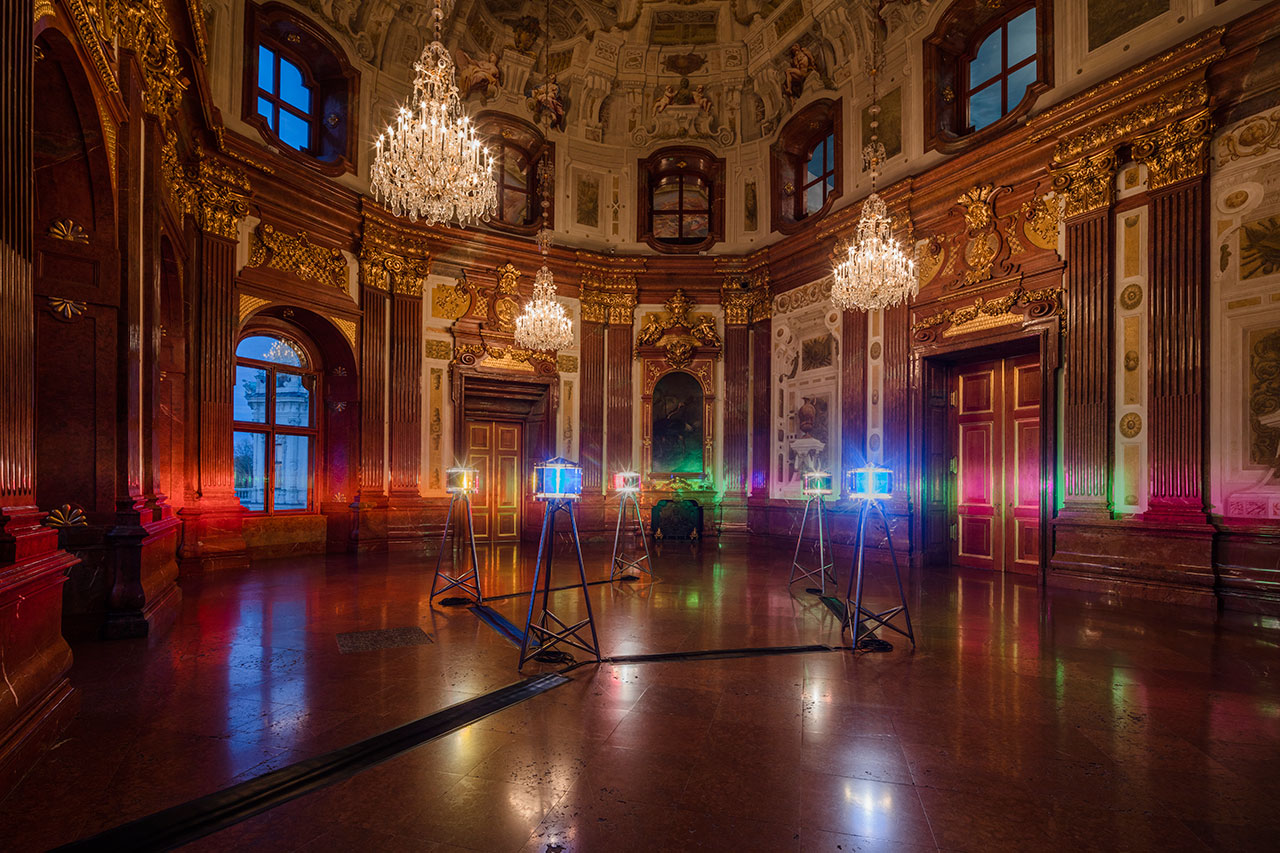
Olafur Eliasson
Five orientation lights, 1999
Stainless steel, coloured glass, halogen bulbs and fresnel lenses
each 200 x 70 x 70 cm
The Winter Palace of Prince Eugene of Savoy, Vienna 2015
Photo by Anders Sune Berg
Courtesy of The Juan & Patricia Vergez Collection, Buenos Aires
© Olafur Eliasson.
In “Wishes versus wonders” (2015), a site-specific intervention, a continuous mirror partition runs along the middle of the rooms splitting them in two but simultaneously conjuring back their original volume by reflecting the visible half. The perception of dizzying completeness is reinforced by a semicircular five-meter brass ring fixed on the mirror in the middle of the rooms, which, though reflection, gives the illusion of a circular form hovering in the middle of the space.

Olafur Eliasson
Fivefold tunnel, 2000
Stainless steel
2,20 x 1,10 , 11 m
The Winter Palace of Prince Eugene of Savoy, Vienna 2015
Photo by Anders Sune Berg
Courtesy of Thyssen-Bornemisza Art Contemporary Collection, Vienna
© Olafur Eliasson.
“Kaleidoscope” (2001), a seven metre long hexagonal optical device hung from the ceiling of the Sala Terrena, also uses reflections but in this case to deconstruct rather than to recreate the space. “What we see through its mechanism”, Eliasson explains, “is to a large extent negotiable, relative and open for engagement”. In other optical installations like “New Berlin Sphere” (2009) and “Your welcome reflected” (2003), refracted coloured light adds a new layer of shifting patterns on top of the baroque iconography, instigating a visual dialogue of past and present.
Eliasson’s wide range of techniques, in full display at this exhibition, require the visitors’ active participation in re-calibrating each space in relation to both the artist’s intervention and their position within it, ultimately making them question the way perception works.

Installation view, 2015
The Winter Palace of Prince Eugene of Savoy, Vienna 2015
Photo by Anders Sune Berg
© Olafur Eliasson.
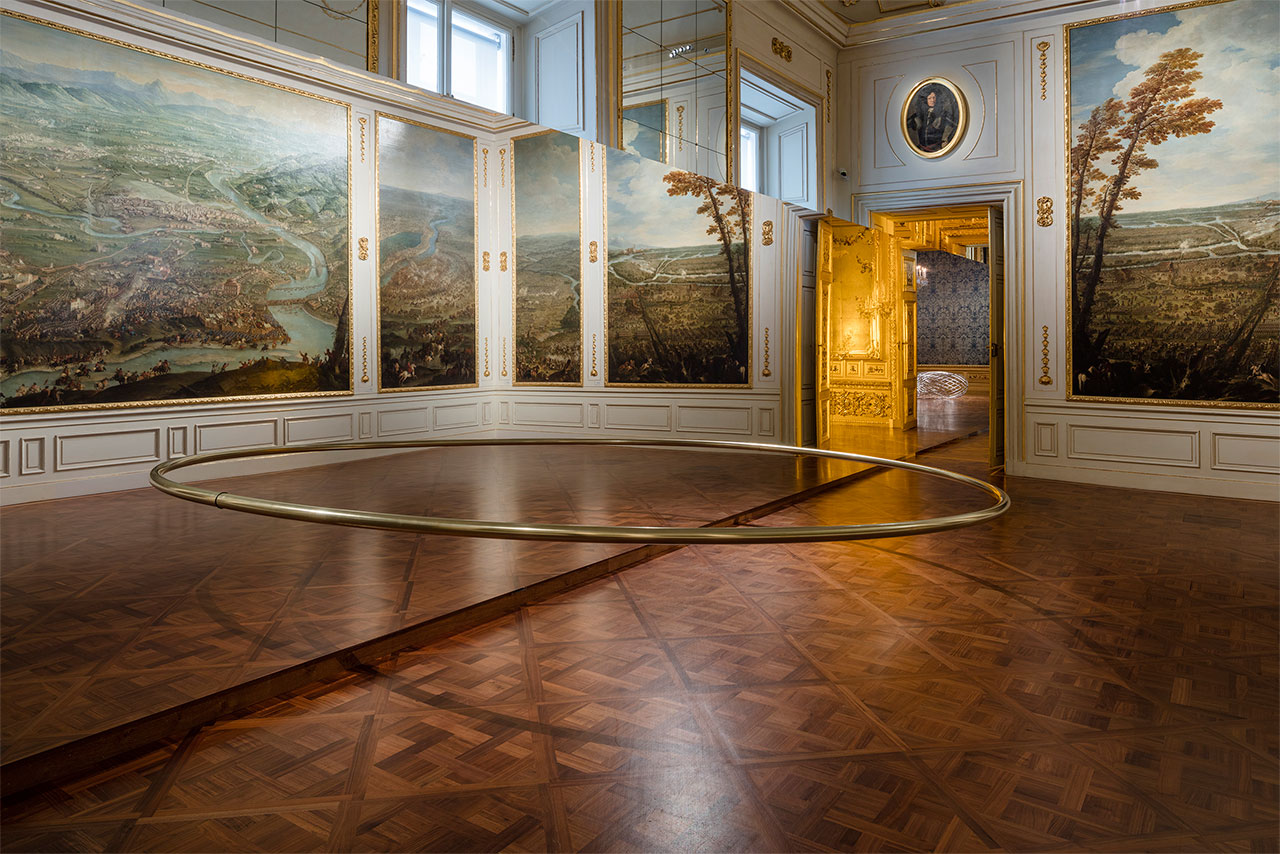
Olafur Eliasson
Wishes versus wonders, 2015
Steel, brass
90 x 500 x 250 cm, ø 6,5 cm
The Winter Palace of Prince Eugene of Savoy, Vienna 2015
Photo by Anders Sune Berg
Courtesy of the artist; neugerriemschneider, Berlin; Tanya Bonakdar Gallery, New York
© Olafur Eliasson.
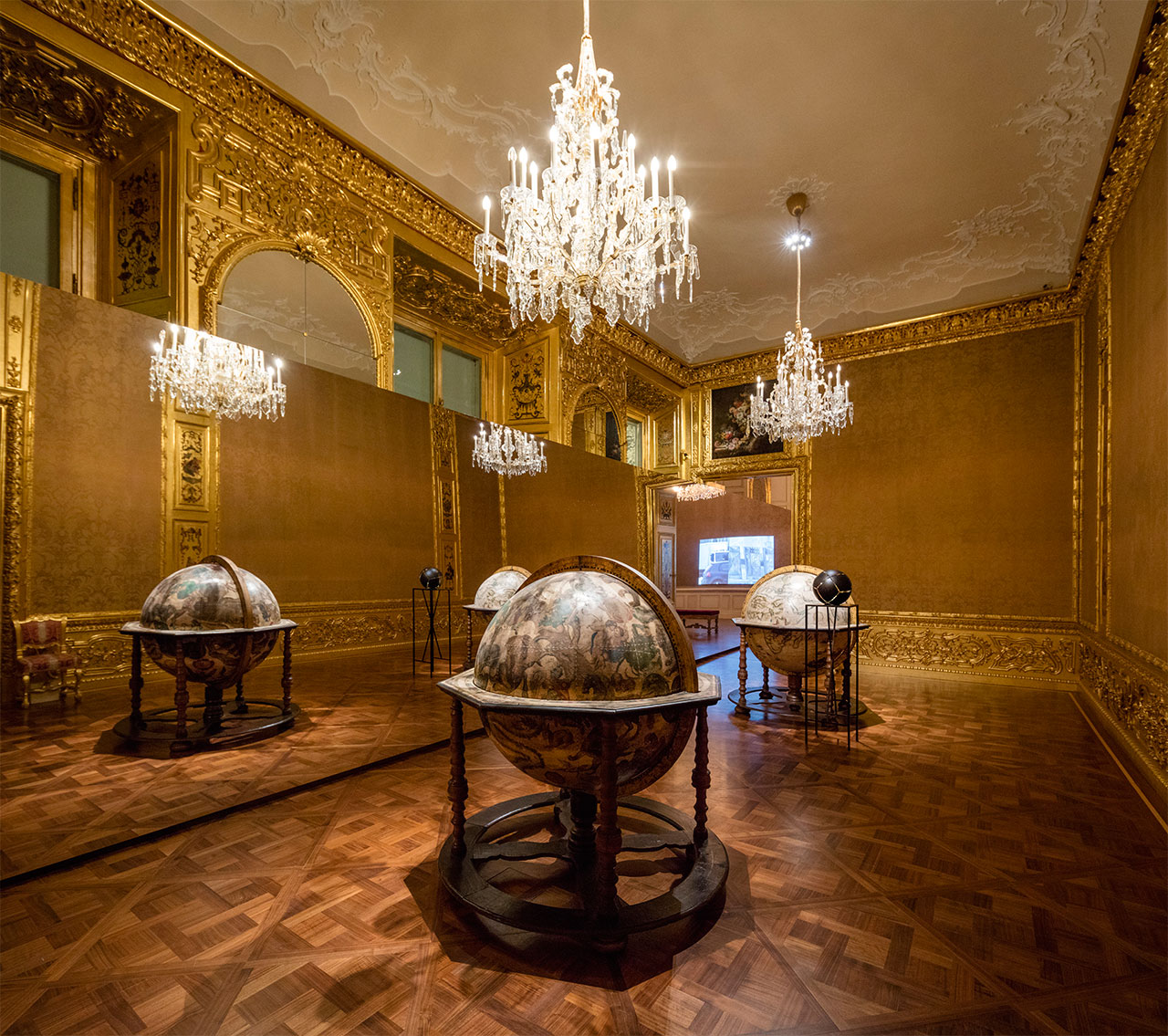
Olafur Eliasson
Lines for horizons, 2014
Partially silvered glass sphere, acrylic paint (black), stainless steel, paint (black)
151,5 x 36 x 36 cm, glass sphere: ø 32 cm
The Winter Palace of Prince Eugene of Savoy, Vienna 2015
Photo by Anders Sune Berg
Courtesy of The Juan & Patricia Vergez Collection, Buenos Aires
© Olafur Eliasson.
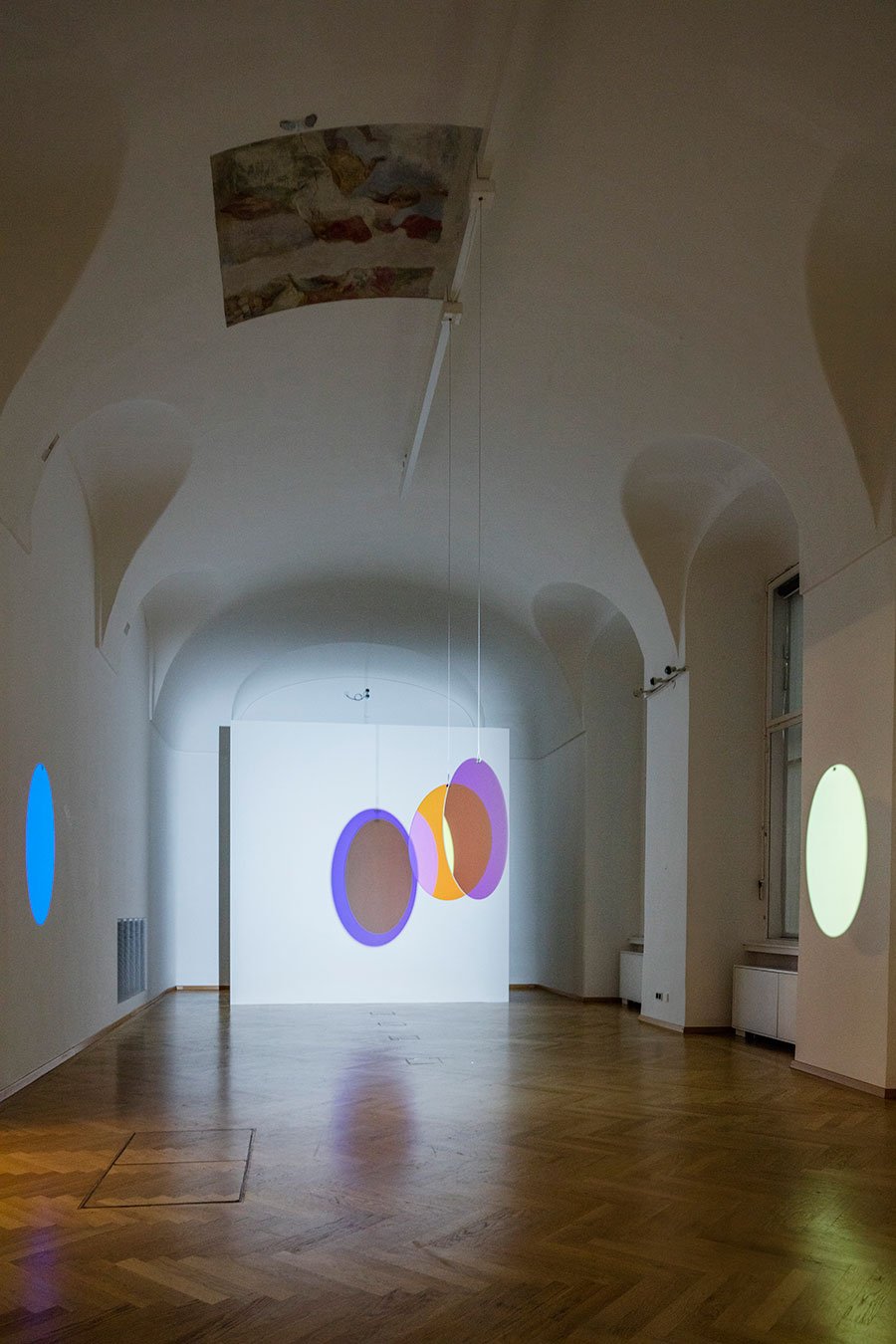
Olafur Eliasson
Your welcome reflected, 2003
2 colour-effect filter glass (blue, red), motors, HMI lamp, tripod
each ø 75 cm
The Winter Palace of Prince Eugene of Savoy, Vienna 2015
Photo by Anders Sune Berg
Courtesy of Thyssen-Bornemisza Art Contemporary Collection, Vienna
© Olafur Eliasson.
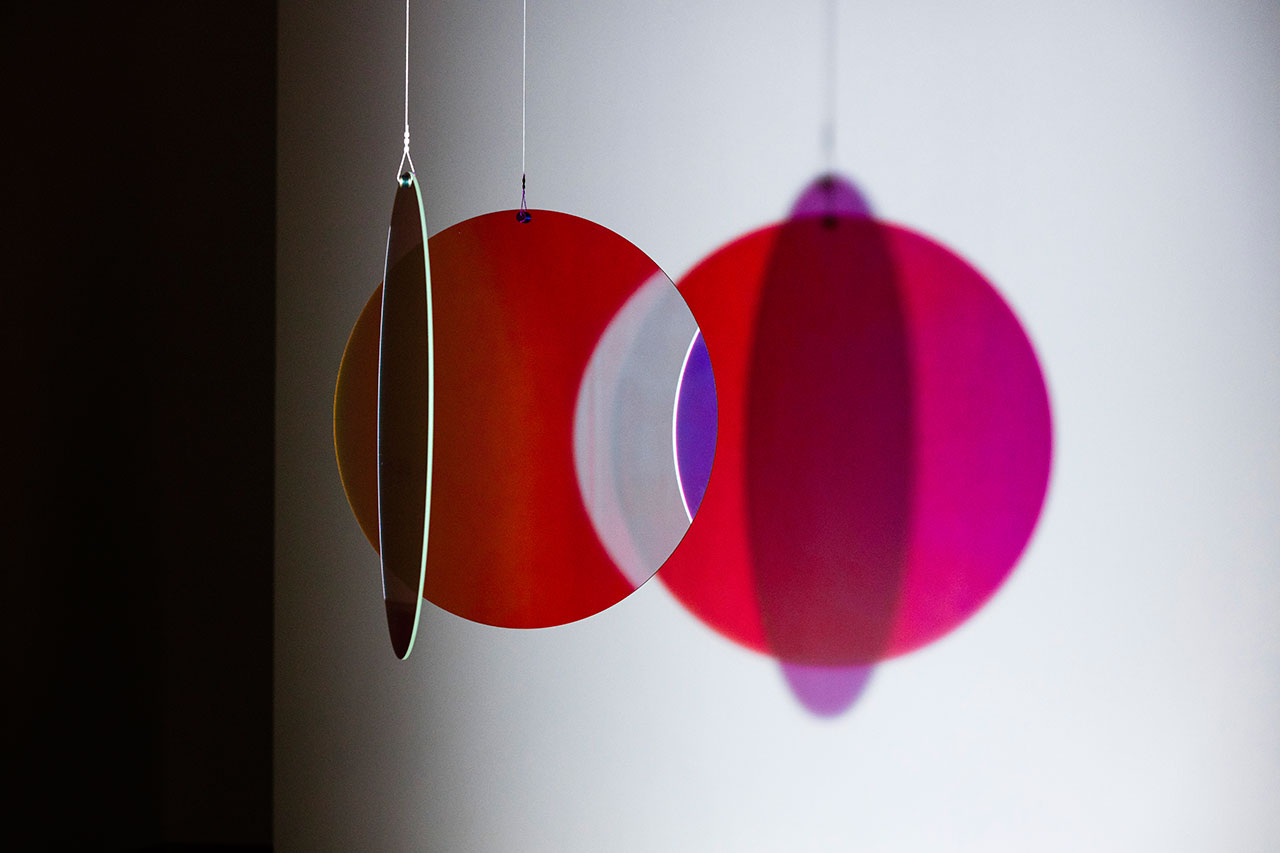
Olafur Eliasson
Your welcome reflected, 2003
2 colour-effect filter glass (blue, red), motors, HMI lamp, tripod
each ø 75 cm
The Winter Palace of Prince Eugene of Savoy, Vienna 2015
Photo by Anders Sune Berg
Courtesy of Thyssen-Bornemisza Art Contemporary Collection, Vienna
© Olafur Eliasson.
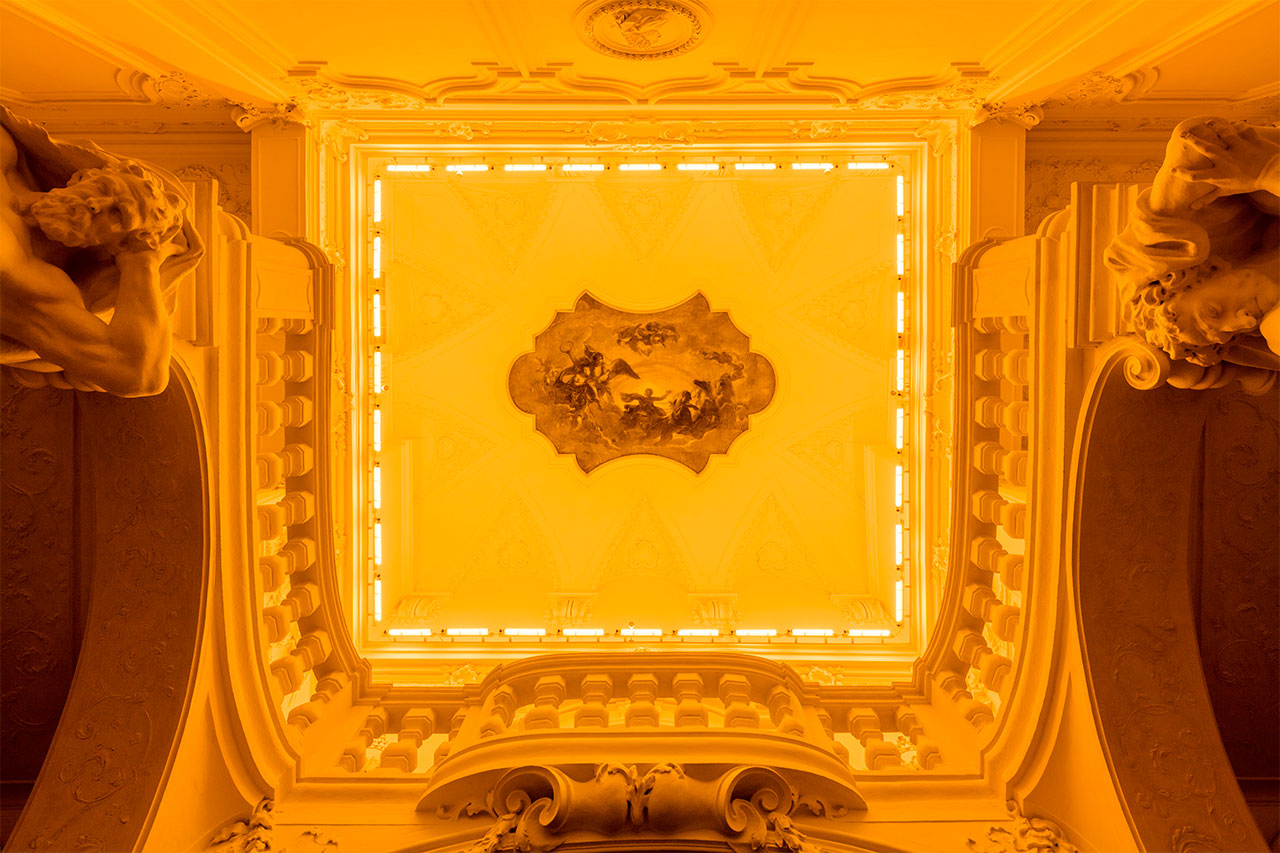
Olafur Eliasson
Yellow corridor, 1997
Monofrequency lights
The Winter Palace of Prince Eugene of Savoy, Vienna 2015
Photo by Anders Sune Berg
Courtesy of The Juan & Patricia Vergez Collection, Buenos Aires
© Olafur Eliasson.
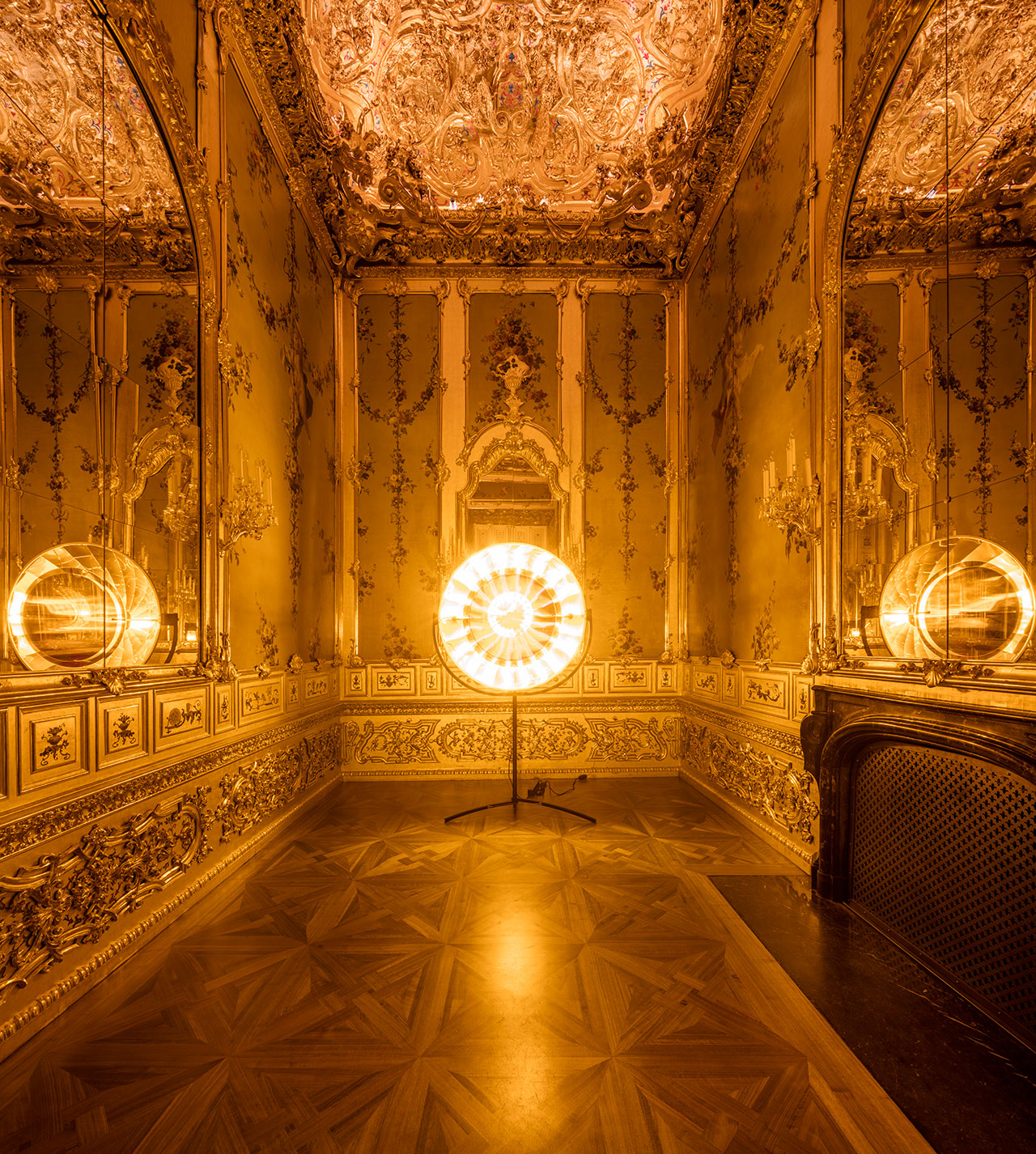
Olafur Eliasson
Eye see you, 2006
Stainless steel, aluminium, colour-effect filter glass, bulb
230 x 120 x 110 cm, ø 120 cm
The Winter Palace of Prince Eugene of Savoy, Vienna 2015
Photo by Anders Sune Berg
Courtesy of Thyssen-Bornemisza Art Contemporary Collection, Vienna
© Olafur Eliasson.

















